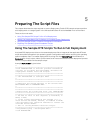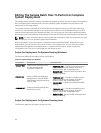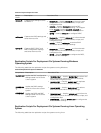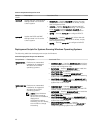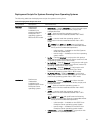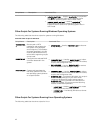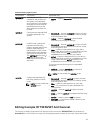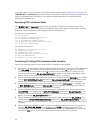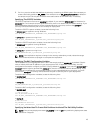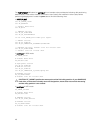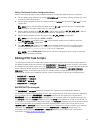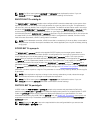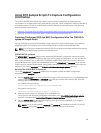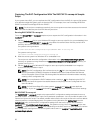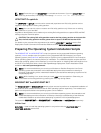
may require edits in certain situations. These optional edits are discussed in Editing DTK Task Scripts. The
TKENVSET.BAT or tkenvset.sh script sets the path of DTK utilities and scripts and sets the variables for the
system to be deployed and configured. The variables and paths specified in this file before other
supporting scripts are used.
Specifying DTK Installation Paths
The TKENVSET.BAT or tkenvset.sh sample script is provided with the following default values. These
values must be confirmed in some cases, and modified in other cases, before a deployment. Locate the
Deployment Toolkit Installation Paths heading to find the following lines:
On systems running Windows:
set DT_DRIVE=X:
set DT_PATH=%DT_DRIVE%\Dell\Toolkit
set DT_TOOLS=%DT_PATH%\Tools
set DT_SYSTEMS=%DT_PATH%\Systems
set DT_SCRIPTS=%DT_PATH%\Template\Scripts
set DT_STOP_ON_ERROR=FALSE
On systems running Linux:
DT_PATH=$dt_drive/opt/dell/toolkit
DT_TOOLS=$dt_path/bin
DT_SYSTEMS=$dt_path/systems
DT_SCRIPTS=$dt_path/template/scripts
DT_STOP_ON_ERROR=FALSE
DT_DRMK=$dt_path/opt/dell/drmk
Confirming Or Editing DTK Installation Path Variables
Perform the following steps to confirm and/or edit the installation path variables:
1. On systems running Windows, set the variable that defines the path to the full set of DTK deployment
files (
DT_DRIVE). On systems running Windows, this variable is set to X: by default in the sample
script. For Windows, this variable is set to X: by default in the sample script. On systems running
Linux, this variable is set to $dt_drive/opt/dell/toolkit by default in the sample script. Edit this drive
letter to reflect the actual drive letter for DTK deployment files, if necessary.
2. Set the variable that defines the path to the full set of DTK deployment files (DT_PATH). This variable
is set to
%DT_DRIVE%\Dell\Toolkit (Windows) or $dt_drive/opt/dell/toolkit (Linux) by default in the
sample script. Edit this path to reflect the actual location of DTK deployment files, if necessary.
3. Set the variable that defines the directory containing DTK utilities (DT_TOOLS). This variable is set
to %DT_PATH%\Tools (Windows) or $dt_path/bin (Linux) by default in the sample script. Edit this
path to reflect the actual location of DTK utilities, if necessary.
4. Set the variable that defines the directory containing the configuration files for your Dell systems
(DT_SYSTEMS). This variable is set to %DT_PATH%\Systems (Windows) or $dt_path/systems (Linux)
by default in the sample script. Edit this path to add a subdirectory for the Dell system you plan to
deploy. For example, $dt_path/systems/peR720.
5. Set the variable that defines the directory containing DTK deployment scripts (DT_SCRIPTS). This
variable is set to %DT_PATH%\Template\Scripts (Windows) or $dt_path/template/scripts (Linux) by
default in the sample script. Edit this path to reflect the actual location of DTK deployment scripts, if
necessary.
6. Set the variable that indicates whether you want the deployment process to exit when any error is
returned (DT_STOP_ON_ERROR). This variable is set to FALSE by default in the sample script,
indicating that errors are handled by the ERRHNDL.BAT (Windows) or errhndl.sh (Linux) script. Set
the value to TRUE only if you want the deployment to exit when any error is returned.
44




